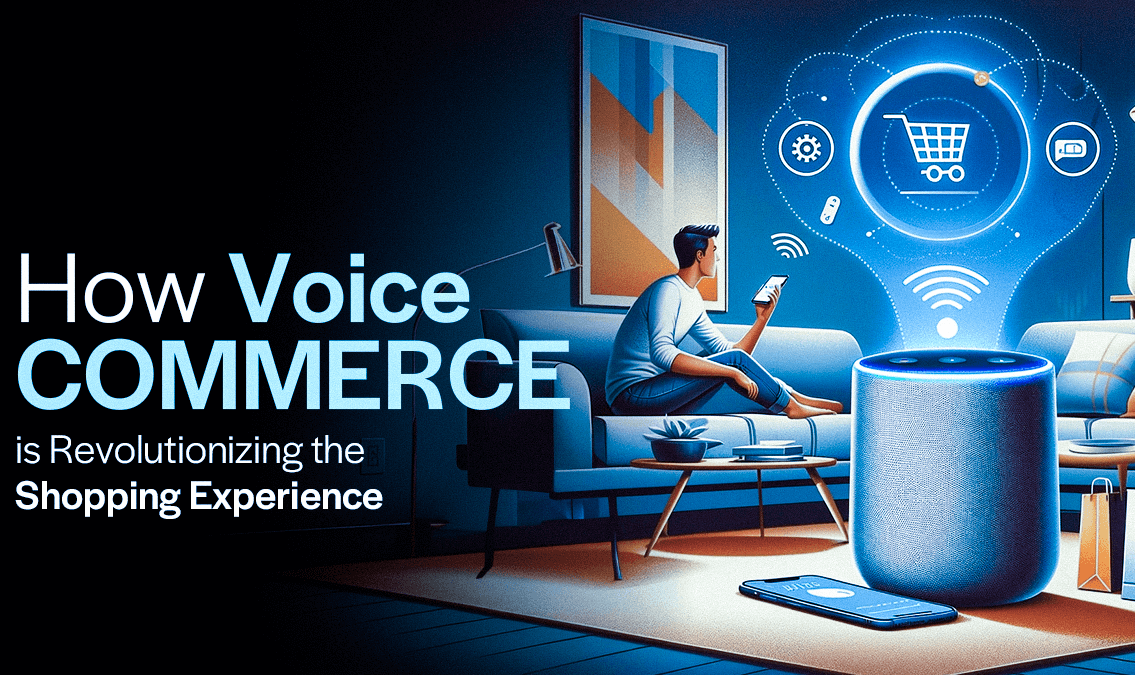- Call Now for a Free Evaluation
- +2347034964068
The Rise of Voice Commerce: Transforming the Future of E-Commerce
Voice commerce, or v-commerce, is rapidly emerging as a significant trend in the e-commerce landscape. With advancements in voice recognition technology and the growing popularity of voice-activated devices like Amazon Alexa, Google Assistant, and Apple’s Siri, consumers are increasingly using voice commands to shop online. This article explores the benefits, challenges, and future potential of voice commerce in e-commerce.
What is Voice Commerce?
Voice commerce refers to the use of voice recognition technology to facilitate online shopping. Consumers can use voice commands to search for products, place orders, track shipments, and perform other shopping-related tasks. This hands-free, conversational interaction offers a convenient and efficient shopping experience.
Key Benefits of Voice Commerce
1. Convenience and Accessibility
Voice commerce provides a seamless and convenient shopping experience. Users can shop hands-free while multitasking, such as cooking, driving, or exercising. This accessibility makes online shopping easier for individuals with disabilities or those who are less tech-savvy.
Benefits:
- Hands-Free Shopping: Shop while multitasking.
- Ease of Use: Simplifies the shopping process.
- Accessibility: Assists users with disabilities.
2. Speed and Efficiency
Voice commands can significantly speed up the shopping process. Users can quickly find products, add them to their cart, and complete purchases without navigating through multiple screens. This efficiency can lead to higher customer satisfaction and increased sales.
Benefits:
- Quick Searches: Instant product searches and queries.
- Faster Checkouts: Streamlined checkout process.
- Improved User Experience: Reduces friction in the shopping journey.
3. Personalization and Recommendations
Voice assistants can provide personalized product recommendations based on user preferences and previous purchases. This tailored approach enhances the shopping experience and encourages repeat purchases.
Benefits:
- Tailored Suggestions: Personalized recommendations based on user data.
- Increased Engagement: More relevant shopping experiences.
- Higher Conversion Rates: Greater likelihood of making a purchase.
4. Enhanced Customer Support
Voice assistants can handle customer support queries, providing instant answers to common questions and resolving issues quickly. This improves the overall customer service experience and reduces the workload on human support agents.
Benefits:
- Instant Support: Quick responses to customer queries.
- 24/7 Availability: Continuous support without downtime.
- Cost Efficiency: Reduces the need for extensive customer service teams.
Implementing Voice Commerce in Your E-Commerce Strategy
Step 1: Optimize Your Website for Voice Search
Ensure your website is optimized for voice search by incorporating natural language keywords and phrases. Voice searches are typically longer and more conversational, so adjust your SEO strategy accordingly.
Step 2: Integrate with Voice Assistants
Partner with major voice assistant platforms like Amazon Alexa, Google Assistant, and Apple Siri. Develop skills or actions that allow customers to interact with your e-commerce store through voice commands.
Step 3: Enhance Product Descriptions
Provide detailed and accurate product descriptions that voice assistants can easily interpret and relay to users. Include key features, benefits, and answers to common questions.
Step 4: Implement Voice-Activated Features
Incorporate voice-activated features on your website and mobile app. This could include voice search, voice-based navigation, and voice-assisted checkouts.
Step 5: Monitor and Optimize
Regularly monitor the performance of your voice commerce features. Collect user feedback and analyze data to identify areas for improvement. Continuously optimize the voice shopping experience based on user behavior and preferences.
Challenges of Voice Commerce
1. Accuracy of Voice Recognition
Voice recognition technology is not yet perfect and can sometimes misinterpret user commands, leading to errors in product searches and orders. Improving the accuracy of voice recognition is crucial for providing a seamless shopping experience.
Challenges:
- Misinterpretation: Incorrectly understanding voice commands.
- Language Variations: Handling different accents and dialects.
- Background Noise: Dealing with noise interference.
2. Privacy and Security Concerns
Consumers may have concerns about the privacy and security of their voice data. Ensuring that voice transactions are secure and that user data is protected is essential for building trust.
Challenges:
- Data Privacy: Protecting user voice data.
- Secure Transactions: Ensuring safe payment processes.
- Consumer Trust: Addressing privacy concerns.
3. Limited Product Interaction
Voice commerce lacks the visual element of traditional online shopping, making it difficult for users to see product images and details. Finding ways to supplement voice interactions with visual information is important.
Challenges:
- Visual Limitations: No visual product representations.
- Detailed Descriptions: Providing comprehensive product information through voice.
- User Adaptation: Encouraging users to embrace voice shopping.
The Future of Voice Commerce
The future of voice commerce is promising, with continuous advancements in AI and voice recognition technology. Here are some trends to watch:
1. Improved AI and NLP Capabilities
Advancements in AI and natural language processing (NLP) will enhance the accuracy and effectiveness of voice assistants. This will lead to more natural and intuitive voice interactions.
2. Multimodal Experiences
Combining voice commerce with other technologies like augmented reality (AR) and visual search can create multimodal shopping experiences. Users can interact with products through voice commands while viewing visual content on their devices.
3. Expanded Use Cases
Voice commerce will extend beyond traditional e-commerce to include areas like smart home integrations, automotive shopping assistants, and in-store voice interactions. This will create a more connected and seamless shopping ecosystem.
4. Enhanced Personalization
Future voice assistants will leverage deeper insights into user behavior and preferences, offering highly personalized shopping experiences. This could include proactive recommendations and personalized shopping journeys.
Conclusion
Voice commerce is revolutionizing the e-commerce landscape by offering a convenient, efficient, and personalized shopping experience. Despite challenges related to accuracy and privacy, the potential benefits make it a worthwhile investment for e-commerce businesses. By optimizing your website for voice search, integrating with voice assistants, and continuously improving the voice shopping experience, you can stay ahead of the curve and capitalize on this emerging trend. Embrace voice commerce to transform your e-commerce strategy and meet the evolving needs of your customers.





